Cybersecurity Awareness Month is in full swing! Most cybersecurity news stories focus on significant data breaches and cybercriminals, which can make cybersecurity feel overwhelming and like it’s out of your control. October is Cybersecurity Awareness Month, which serves as a reminder to everyone that there are numerous ways to safeguard your data. Just learning the fundamentals of cybersecurity can have a significant impact.
You can greatly increase your cyber safety at work and at home by taking a few basic steps:
- Enable multi-factor authentication (MFA) for all important online activities. MFA is one of the most important cybersecurity practices to reduce the risk of intrusions. Users who enable MFA are up to 99% less likely to have an account compromised.
- Use long, complex, and unique passwords. Passwords are the keys to your digital castle. You should take every precaution to keep your passwords secure, just like you would with your house keys. All passwords should be generated with the following guiding principles in mind:
-
- Long – At least 14 characters should be included in each of your passwords.
- Complex – Each password should be complex and contain a mix of capital and lowercase letters, digits, and special characters.
- Unique – Each account must be secured by a separate, individual password. Use unique passwords only. This way, even if one of your accounts is compromised, the rest will remain safe.
-
- Update your software. Software updates are a simple method to stay one step ahead of the bad guys. Software updates are designed to close security holes, add fresh features, safeguard your data, and increase efficiency. Just make sure to only download software updates from verified software sources (i.e. Microsoft, Google Play Store, Apple App Store).
- Think before you click: recognize and report phishing. Phishing is one of the most popular tactics for cybercriminals, and phishing attacks are increasingly convincing and persuasive. Cybercriminals will attempt to manipulate our emotions to persuade us to click questionable links, download dangerous attachments, and disclose our credentials. Spend a few seconds making sure emails are legitimate before clicking any links or attachments. Here are some guidelines for recognizing a phishing email:
-
- Is this a bargain that seems too good to be true?
- Does it use threatening, scary, or urgent language?
- Does it ask for personal or financial information to be sent?
- Is it an odd business request?
- Does the email address of the sender match the business it is from? Pay attention to minor misspellings like Anazon.com or Pavpal.com
-
 If you suspect the email is not legitimate, report it using the Report Phishing button and delete it.
If you suspect the email is not legitimate, report it using the Report Phishing button and delete it.

